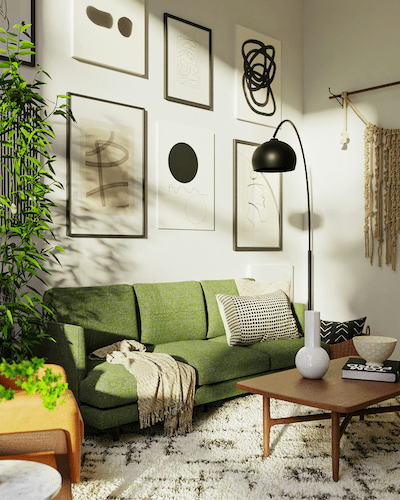I’ve always loved the idea of furnishing your home over time. There’s something special about letting your space evolve with you, collecting pieces that tell your story. And let’s face it, most of us don’t have a bag of cash lying around after buying a new home, right?
When I bought one of my previous condos, I actually felt ahead of the game. I’d set aside a separate account just for furnishing it. For once in my life, I had everything planned. I had the design vision. I had the budget. And I was so excited.
But as luck would have it… the universe had other plans.
My plan was to put down 10%, but a few weeks before closing, I got a call that changed everything. The building had just been designated a heritage property, which meant my mortgage couldn’t be insured. Suddenly, I had to come up with another 10% downpayment, and fast.
And since I didn’t, in fact, have that mythical bag of cash tucked under my mattress, my carefully saved furnishing budget went straight to the downpayment. Which meant… no new furniture. Wah…wah.
At least, not right away.
So I did what most homeowners do. I started small. One piece at a time. A sofa here, a side chair there. It felt like progress but before long, I realized I was falling into the same sneaky trap I warn my clients about all the time. I call it piecemeal decorating.
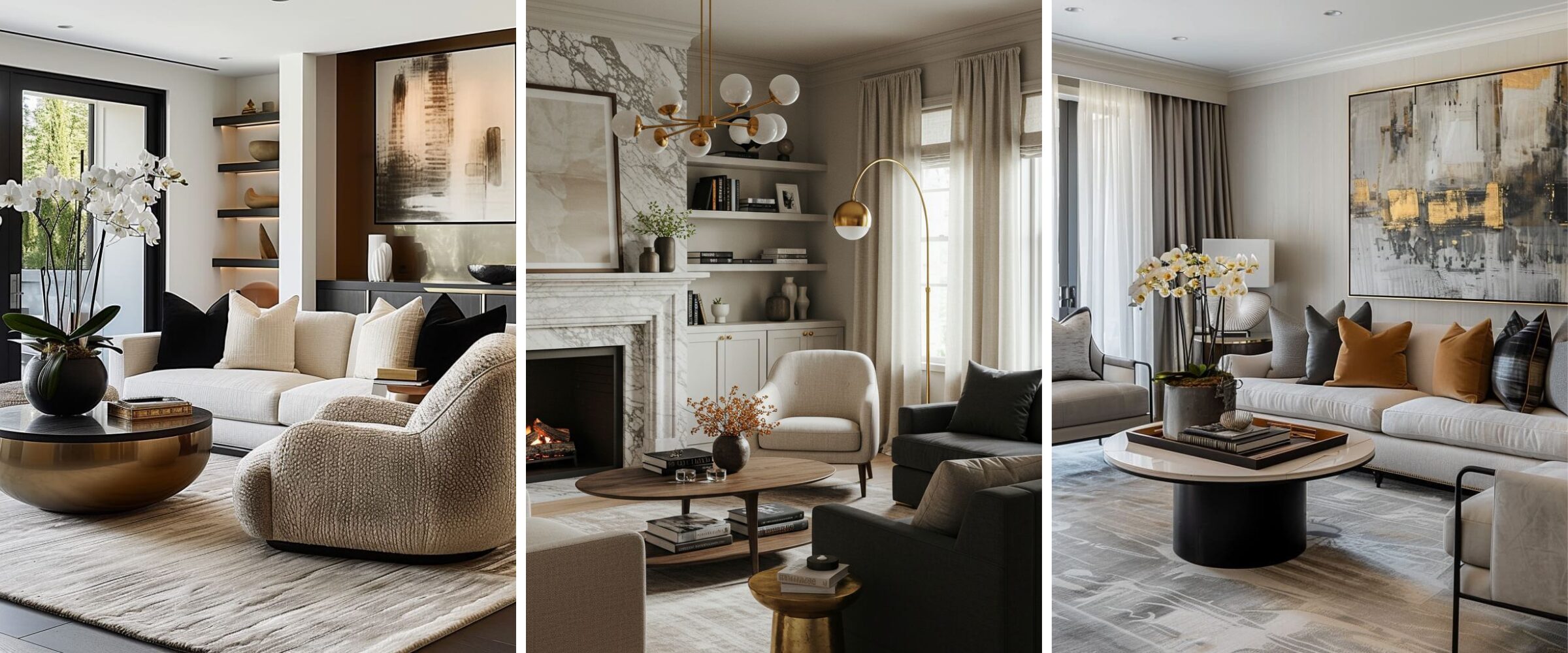
Images via Pinterest.
What Is Piecemeal Decorating?
At first, I convinced myself I was being practical. I told myself I’d furnish slowly, finding pieces I loved over time. And that’s exactly what I did. I was going for a curated look. I’d come across a coffee table that caught my eye, or a lamp that looked just right, and I’d bring it home.
It felt like progress. Each piece added a little something to the space. But as the months went on, I started to notice that nothing really worked together. My space just didn’t have that elevated look. The sofa was a different undertone from the rug. The scale of the side table was slightly off. The lamp that looked perfect in the store suddenly felt awkward in the room.
That’s when it hit me.
Even though I was being thoughtful, I was still making the same mistake most homeowners make. Buying one thing at a time without a big-picture plan.
That’s what piecemeal decorating essentially is. Furnishing room by room, or piece by piece, without an overarching design plan to tie everything together. It feels responsible, maybe even smart, because you’re spreading out your costs. But in reality, it’s a slow leak on your budget and your sanity.
You don’t notice it at first, but the effects build over time. Before you know it, you’ve spent thousands on furniture and decor that don’t quite fit literally or visually.
And if you’ve ever stood in your living room thinking, “I’ve bought so many nice things… why doesn’t this room feel right?” — chances are, you’ve fallen into the same trap too.
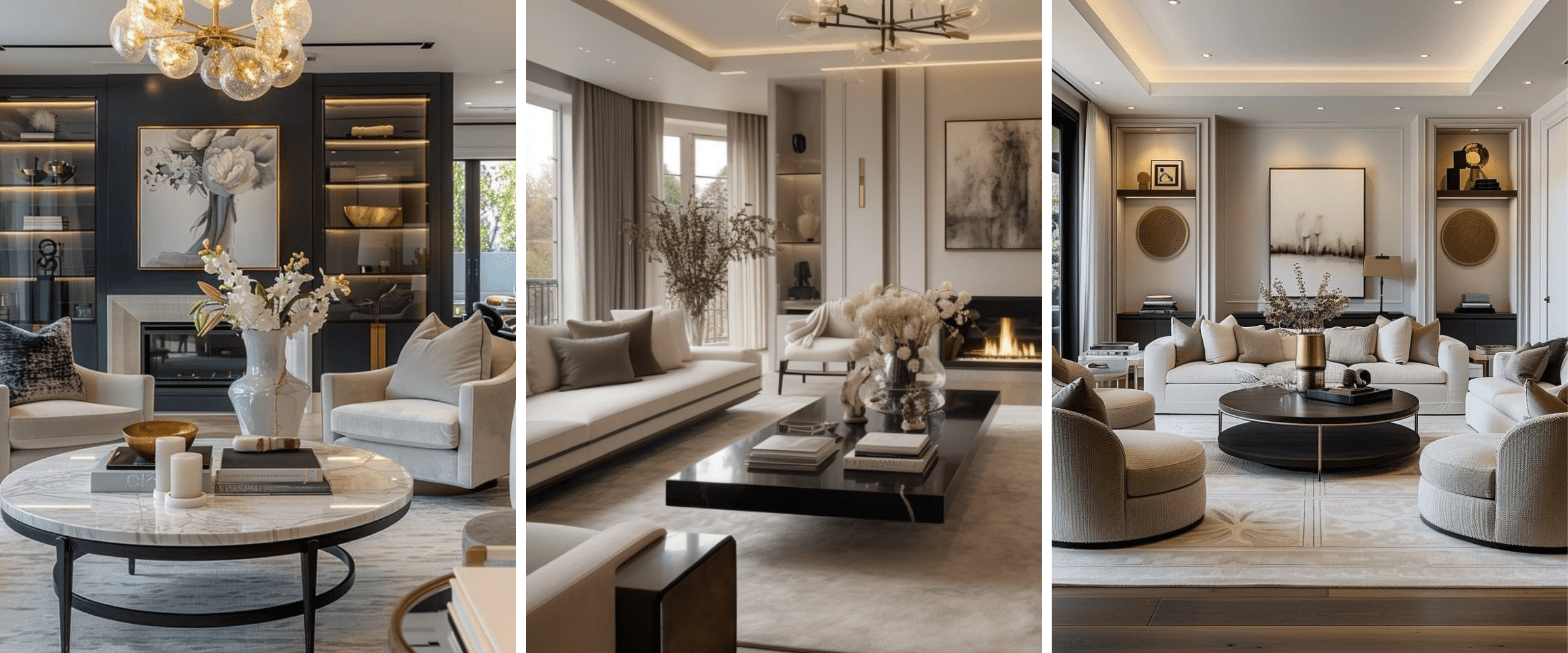
Images via Pinterest.
Why It’s So Costly
Here’s the thing. Piecemeal decorating doesn’t feel like a mistake when you’re in it.
It feels manageable and even smart like I said before. You’re pacing yourself, making thoughtful decisions, and avoiding a huge upfront spend.
But what you don’t see at first are all the hidden costs quietly piling up in the background.
Every time you buy something without a plan, you take a small gamble. Will it fit? Will the colour clash? Will the scale feel right once it’s home?
Sometimes it works.
But more often than not, it doesn’t.
And that’s when the “little fixes” begin. You replace the rug because it’s too small, but now the sofa fabric looks off. You buy new drapes to pull the room together, but suddenly the coffee table feels wrong.
Each purchase leads to another. And the numbers start adding up faster than you think.
It’s a silent budget drain. One that’s easy to miss because it happens over time.
But the financial cost isn’t the only part that stings.
There’s also the emotional toll. You know, the frustration of constantly tweaking your space and never feeling done; the disappointment when you realise something you loved in the store doesn’t work at home; the overwhelm of having to start over, yet again.
I’ve watched clients go through this before we start working together. Many of them have already spent thousands trying to get it right. And by the time we meet, they’re not just out of money, they’re out of confidence.
The truth is, piecemeal decorating costs more because it lacks direction.
Without a plan, every purchase is a roll of the dice.
And eventually, you end up paying not just in dollars, but in time, energy, and peace of mind.
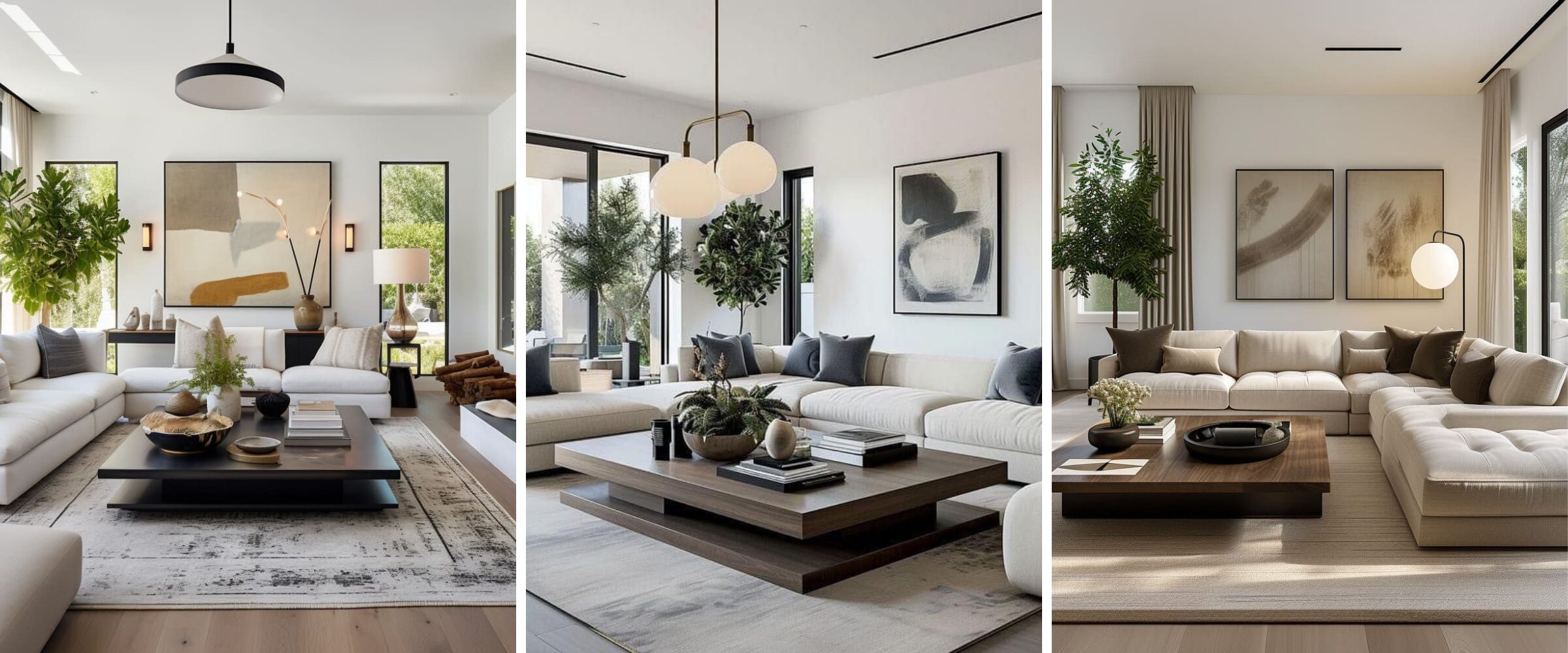
Images via Pinterest.
The Hidden Cousins of Piecemeal Decorating
If piecemeal decorating is the main culprit behind wasted decorating budgets, there are two sneaky cousins that often tag along…and they can cost you just as much.
These mistakes usually happen because you’re decorating one piece at a time. They’re harder to see coming, but once you do, it’s like a lightbulb moment.
1. Wrong Scale Furniture
When you’re shopping without a plan, it’s nearly impossible to get scale right.
You see a beautiful sectional in a showroom or online photo, and it looks perfect. But what you don’t see is that the ceiling in that photo might be 10 feet high, or the room is twice the size of yours.
So you buy it. It arrives. And suddenly… it swallows your room.
Or it’s the opposite. You pick a small, sleek sofa to make the space feel bigger, but it ends up looking lost in the room. The rug is too small, the side table is too tall, and nothing feels quite in proportion.
These scale mistakes are some of the most expensive to fix. Returning a large piece of furniture can cost hundreds in shipping or restocking fees. And if you keep it, you’ll often find yourself buying more to compensate. Like a bigger rug, new lighting, maybe even a new layout, just to make the space feel balanced again.
I’ve had clients come to me with a brand-new living room set they bought during a sale, a “great deal” at the time, only to realise later it didn’t fit the room at all. What started as saving a few hundred dollars ended up costing thousands in replacements.
It’s one of those moments that makes you wish you’d just waited to have a plan first.
2. Ignoring Space Planning
The second cousin of piecemeal decorating is skipping the space planning altogether.
This one’s especially sneaky because it often happens after a renovation or remodel. You’ve done the hard work…chosen the finishes, picked the paint, installed the lighting…and you’re ready to decorate. But now you’re working around outlets, fixtures, and layouts that were never designed with your furniture in mind.
That’s when the headaches start.
The dining light that isn’t centred over the table.
The sofa that blocks the walkway.
The console table that sticks out just enough to bump your hip every time you pass.
I’ve seen it so many times. Homeowners who spend money moving outlets, patching drywall, or even replacing furniture because something just doesn’t fit. And it’s not because they made bad choices. It’s because they made choices in the wrong order.
Space planning might not feel glamorous, but it is absolutely the foundation of every successful design. It’s what makes your home flow effortlessly. And it’s what saves you from costly “if only we had thought of that earlier” moments.
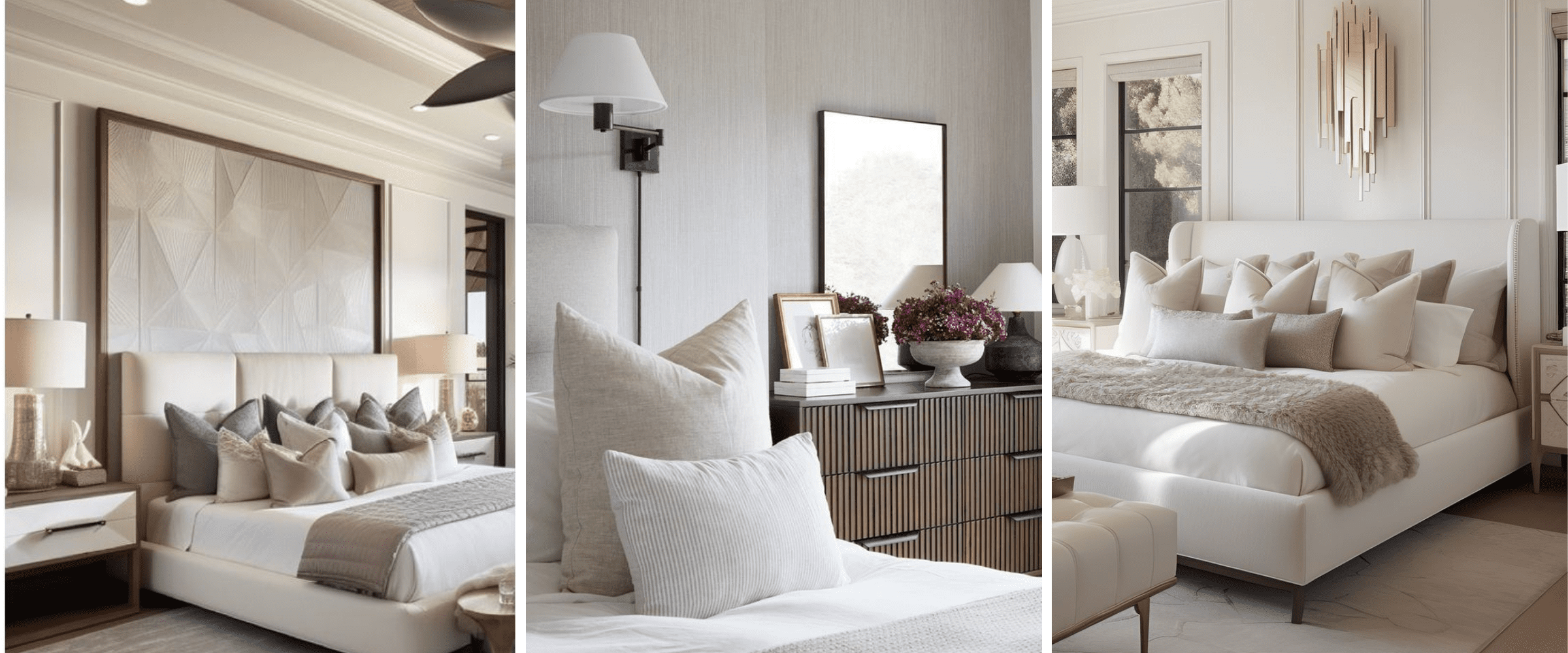
Images via Pinterest.
The Real Cost Isn’t Just Money
Here’s the kicker…the biggest losses in piecemeal decorating are often the ones you can’t put a price tag on.
It Costs You Confidence
When your home never quite looks or feels right, it’s easy to start questioning yourself.
You wonder if you have bad taste, if you’re indecisive, or if you’re just not “good” at decorating.
But the issue isn’t your style. It’s the lack of a roadmap. Without a clear plan, every choice feels like a gamble. So you hesitate, overthink, and second-guess even the small decisions.
Confidence fades little by little, until decorating, something that should feel creative and exciting, becomes stressful and exhausting.
It Costs You Time
Hours (or let’s be honest, days) spent scrolling Pinterest, browsing stores, and debating between fifty shades of beige. Returning items that didn’t work. Waiting months for deliveries only to realise you still don’t love the result.
It’s a never-ending cycle that steals your evenings and weekends. And because you’re constantly in “fix-it” mode, your home never actually feels done.
And It Costs You Joy
This is the part no one talks about. The emotional weight of living in a space that doesn’t feel like you.
When your home feels off, it seeps into your mood and energy. You don’t host as often. You don’t feel inspired. You catch yourself apologising when people come over, saying things like, “It’s still a work in progress.”
I’ve seen how deeply this can affect people. And I’ve felt it myself. A home that’s supposed to recharge you instead becomes a source of quiet frustration.
And that’s the real cost of piecemeal decorating.
It’s not just money. It’s confidence, time, and the simple joy of walking through your front door and feeling at peace.
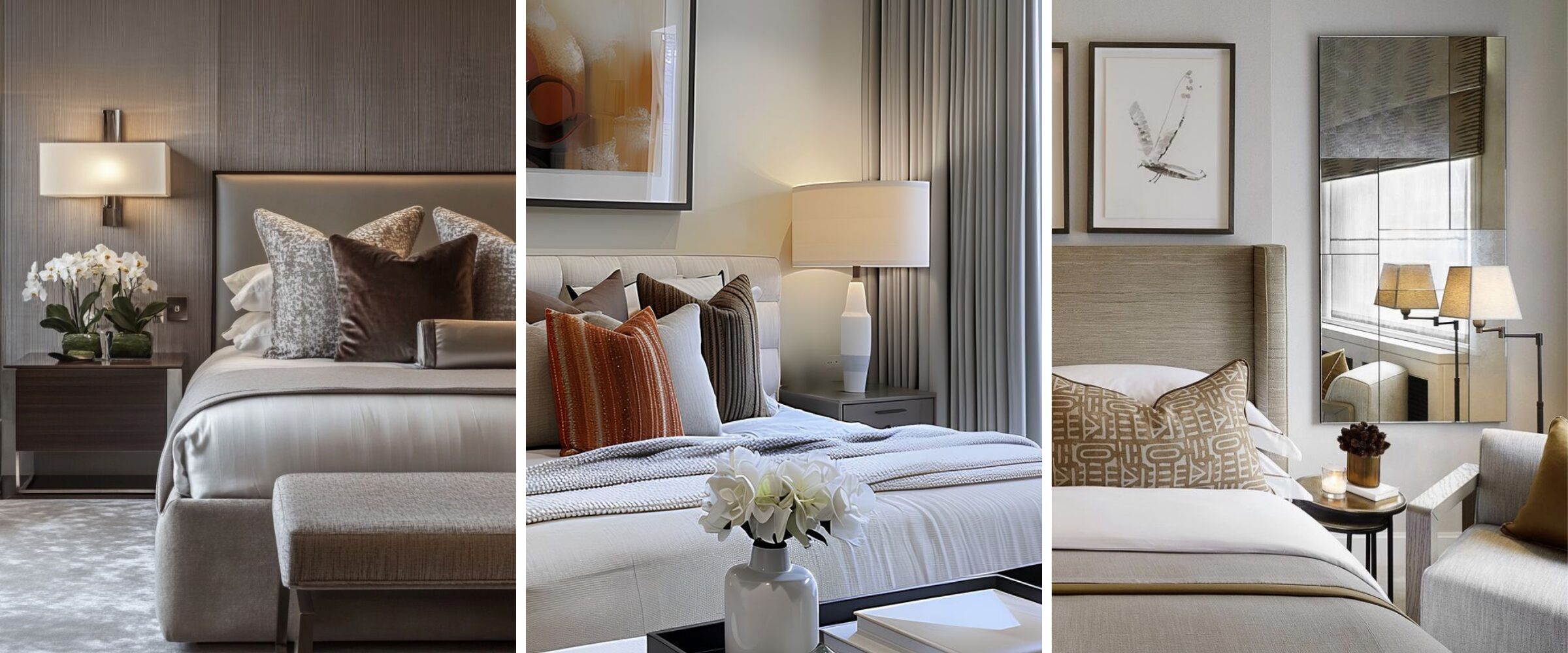
Images via Pinterest.
How to Avoid It (Your Expert Shortcut)
The good news? Avoiding these mistakes is easier than you think.
You don’t need to start from scratch. You don’t need a massive budget. And you definitely don’t need to have it all figured out before you begin. And you also don’t need to buy everything in one go.
You just need a plan…a plan that tells you what colour, what size and where exactly it goes in the room.
A design plan is like a roadmap. It connects where you are now to where you want to be. It takes the guesswork out of every decision and makes sure every piece you buy fits beautifully with the next.
When you have a plan, every purchase has a purpose.
Your sofa complements your rug.
Your lighting enhances the space instead of competing with it.
Your finishes flow from one room to the next.
And instead of wondering, “Will this work?”, you’ll know exactly how it all comes together before you spend another dollar.
That’s what we do at Daakor. We help you get the design right before you buy.
Step 1: Diagnose the Problem with Room Rx
If you’re not sure what’s off in your space, start here.
Room Rx is like a professional “prescription” for your room’s design challenges. You’ll send photos and answer a few questions, and we’ll create a personalized video report showing you exactly what’s not working. And how to fix it.
It’s the perfect first step if you’ve already spent money decorating and still feel something’s missing.
Step 2: Bring the Vision to Life with Makeover Magic
Once you know what’s wrong, the next step is creating the plan that makes everything click.
With Makeover Magic, we design your room from top to bottom — complete with layout, 3D visualizations, and a shoppable list of every item you’ll need to bring it all together.
It’s the ultimate shortcut to that “magazine-worthy” feeling, without wasting a single dollar on things that don’t fit.
When you have a cohesive plan guiding your purchases, the entire process feels lighter.
You stop guessing.
You stop second-guessing.
And instead, you start seeing your space come together faster. And often for less money than you think.
Because here’s the truth.
Working with a designer isn’t about spending more.
It’s about spending better.
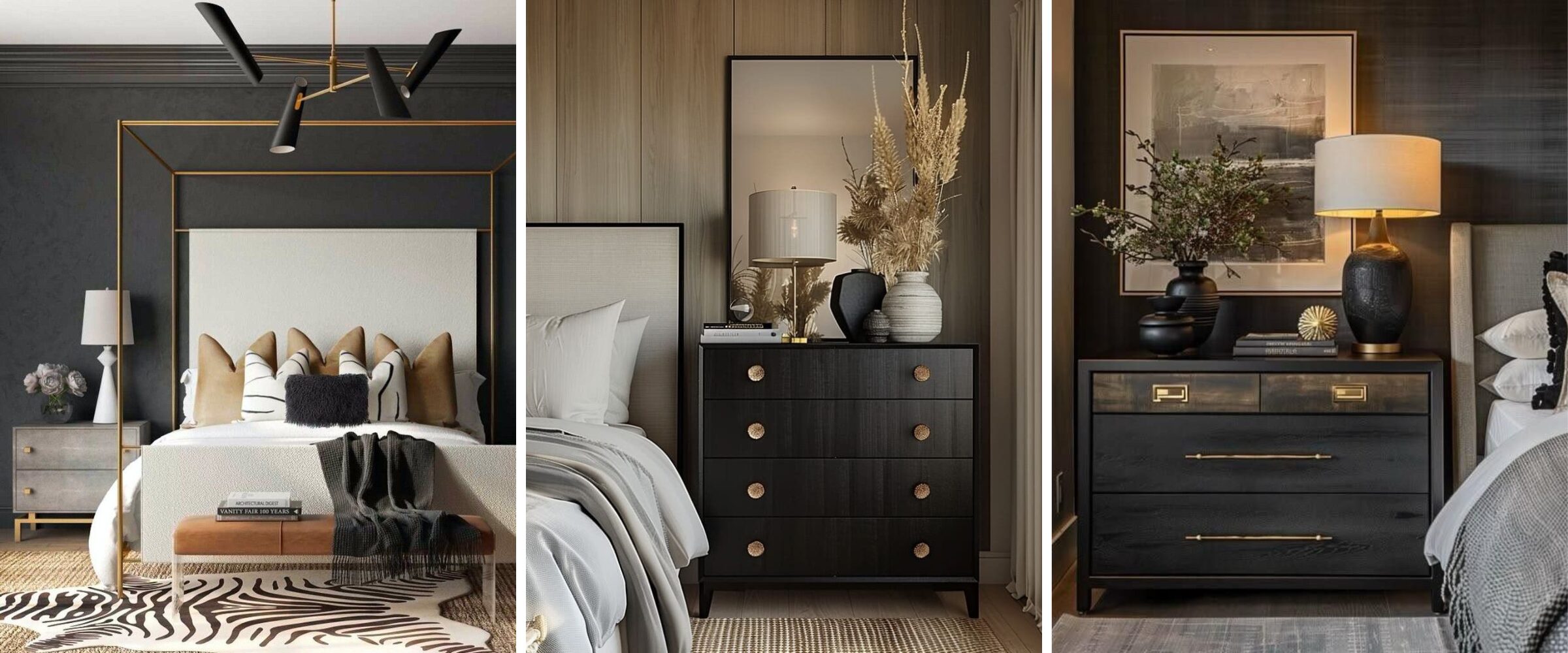
Images via Pinterest.
Final Thoughts
I’m not against purchasing furniture and decor over time. In fact, I’m a big proponent of it. Because it’s the reality for most of us…unless you win the lotto or have that mythical bag of cash under your mattress, furnishing a home takes time.
But do it with a plan.
Instead of trying to make random pieces work together, you’ll see the whole picture before buying anything. Every decision will feel easier, faster, and more intentional. And when the furniture finally arrives, you are confident that it will work. The space will feel cohesive, calm, and complete.
That’s what happens when you design with a plan.
You stop wasting money on trial and error.
You make confident decisions instead of hopeful guesses.
And you start to feel proud of your home again.
If you’ve found yourself in the middle of piecemeal decorating, buying things here and there but never quite getting the result you want, you’re definitely not alone. Almost every homeowner I meet has been there.
But the moment you shift from decorating by impulse to decorating with intention, everything changes.
Your home starts to feel like a reflection of you…not just a collection of furniture.
Your money starts working for you, not against you.
And your space finally feels like home.
So before you hit “checkout” on that next piece, pause for just a second and ask yourself…does this fit my plan? Or am I just piecemeal decorating again?

